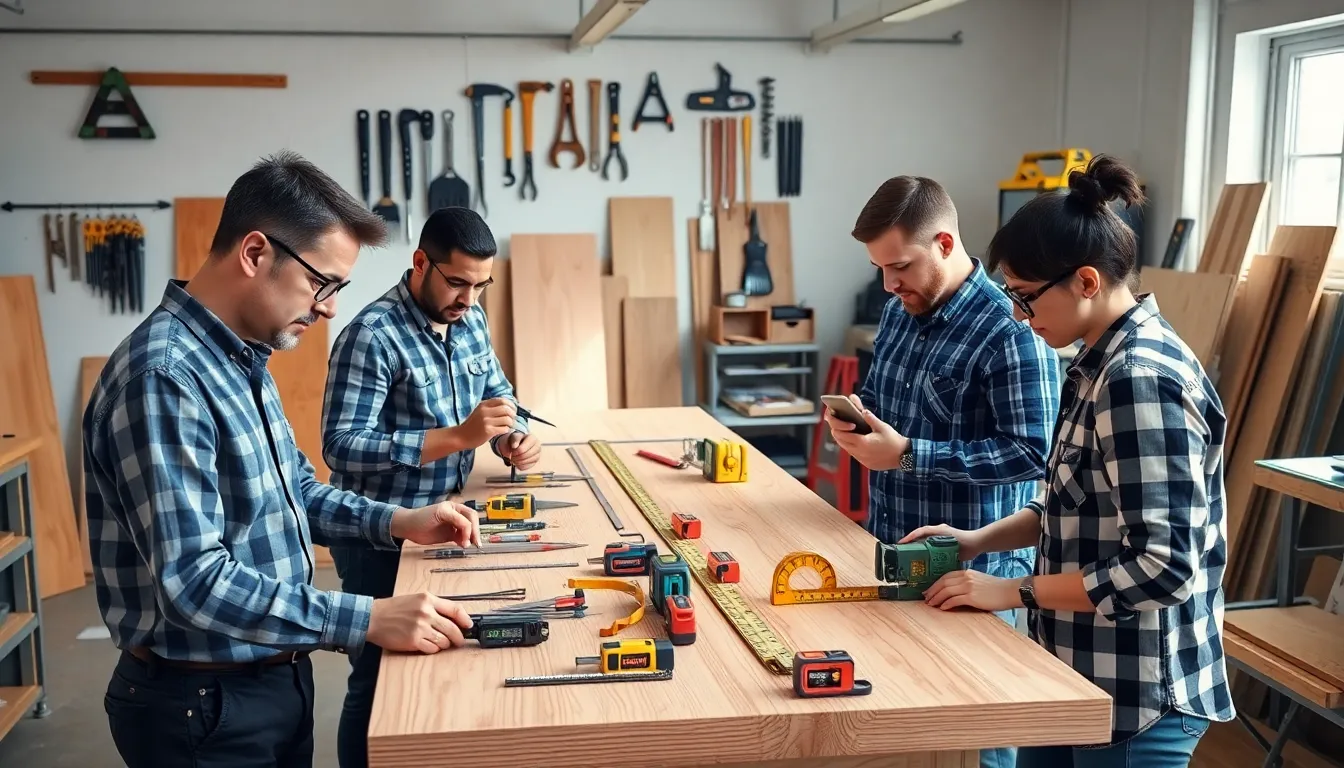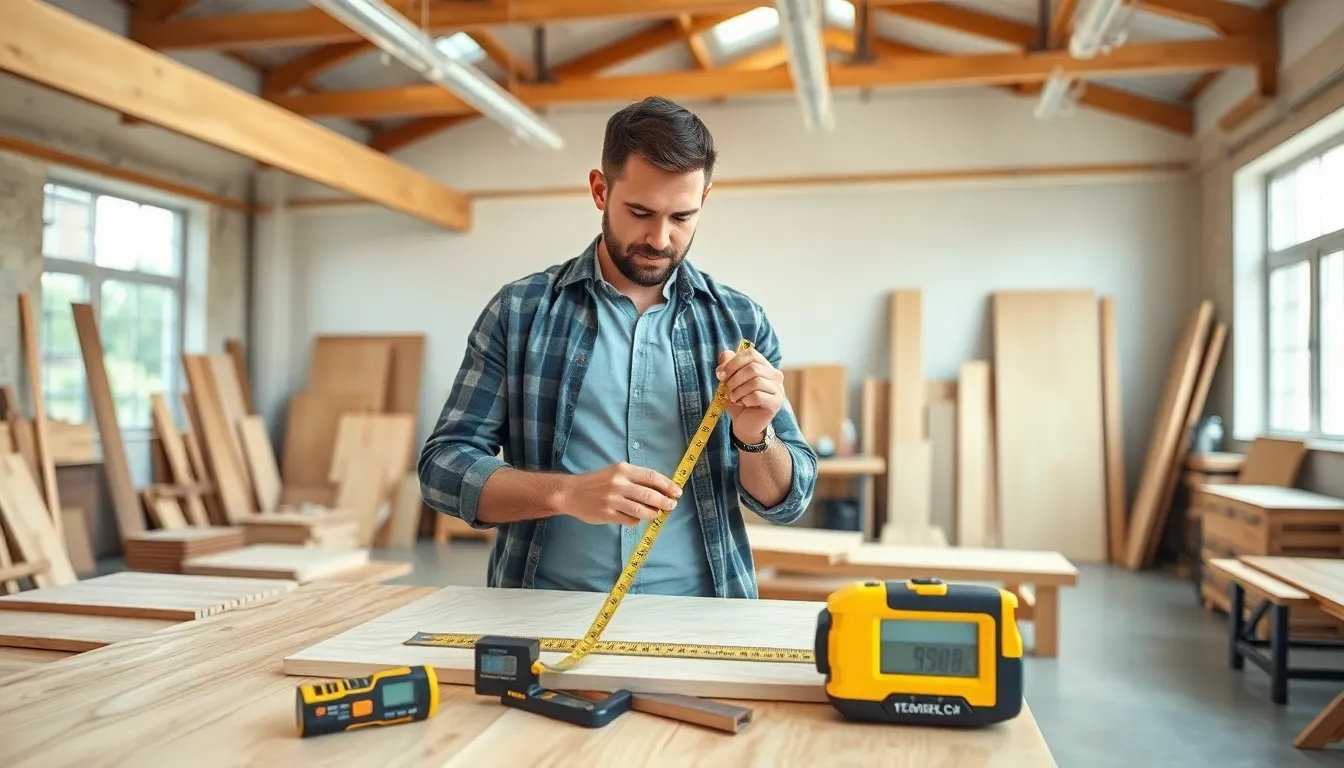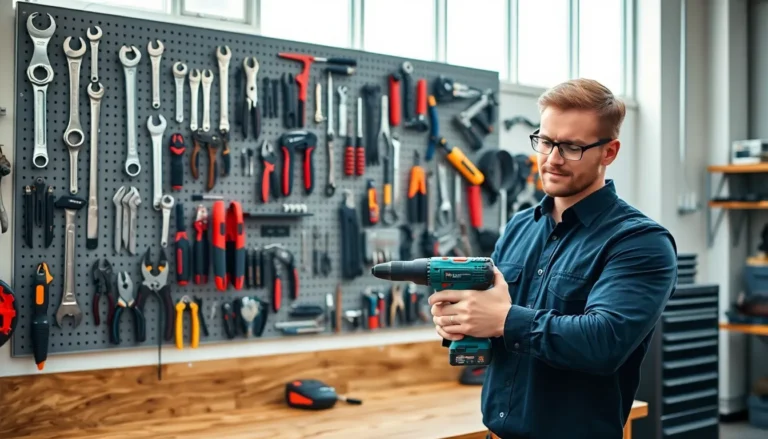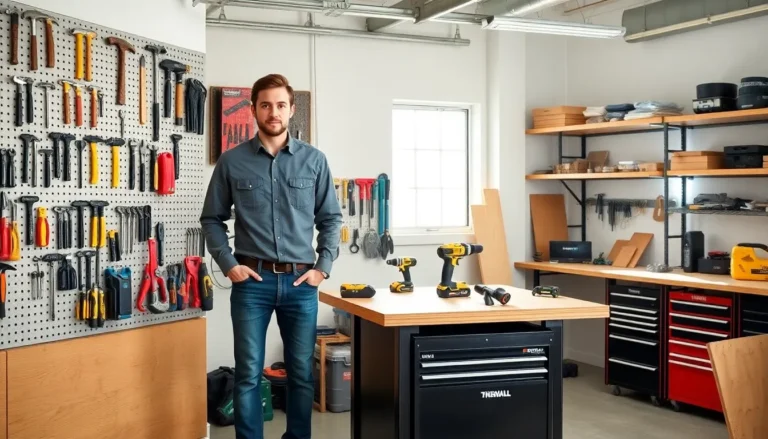In any workshop, the difference between a masterpiece and a disaster often comes down to one simple factor: precision. Yes, we’re talking about measuring tools, the unsung heroes of every project that can elevate your work from slapdash to splendid. Imagine attempting to build a new cabinet without accurate measurements: it’d be like trying to solve a Rubik’s cube blindfolded. So, let’s jump into the world of measuring tools, ensuring your next creation doesn’t just meet the bare minimum but exceeds expectations. Trust me, your future self, armed with a perfectly crafted wooden chair or a symmetrical picture frame, will thank you.
Table of Contents
ToggleImportance Of Measuring Tools

Measuring tools are the backbone of any successful workshop. They ensure accuracy, which leads to better quality workmanship. When engineers, carpenters, or hobbyists understand the importance of meticulous measurement, they minimize the chance for error. A slight miscalculation can lead to gaps, uneven surfaces, or worse, safety hazards. Also, precise measurements save time and materials. Getting it right the first time means less waste and fewer trips back to the store for extra supplies. In an era where sustainability is key, using measuring tools efficiently contributes positively to the environment and your wallet.
Types Of Measuring Tools
Understanding the various types of measuring tools available helps users select the right tools for their specific tasks. Below are some essential categories:
Handheld Measuring Tools
Handheld measuring tools are often the first line of defense when it comes to measuring. They include:
- Tape Measures: Versatile and easy to use, tape measures are perfect for both small and large projects.
- Rulers: Best for smaller, detailed work, rulers offer straight edges and precise measurements.
- Calipers: Perfect for measuring the internal and external dimensions of objects, calipers provide higher accuracy than tape measures.
Digital Measuring Tools
Digital measuring tools have revolutionized the way measurements are taken. They offer ease of use and enhanced accuracy. These include:
- Laser Distance Measurers: These devices eliminate guesswork by using laser technology to provide instant distance readings.
- Digital Calipers: With a display that shows measurements in real-time, digital calipers speed up the measuring process while maintaining accuracy.
Specialized Measuring Tools
Certain tasks call for specialized measuring tools, tailored to specific jobs. Examples include:
- Angle Finders: Ideal for woodworking or tiling projects, these help achieve the perfect angles.
- Depth Gauges: Used mainly in metalworking, depth gauges measure the depth of holes or slots accurately.
Choosing The Right Measuring Tools
Selecting the correct measuring tools involves a few key considerations. First, assess the nature of your project. Are you working in a cramped space where a flexible tape measure is necessary? Or is laser precision essential for long distances? Next, think about your level of expertise. For beginners, simpler tools like tape measures and rulers may suffice, while seasoned professionals might benefit from advanced digital options or specialized tools. Finally, consider your budget. While investing in quality tools is crucial, it’s possible to find reliable options without very costly.
Calibration And Maintenance
To ensure accuracy, regular calibration of measuring tools is vital. Calibration is the process of checking and adjusting the accuracy of a tool against a standard. Here are some tips to maintain measuring tools:
- Regular Checks: Periodically check tools for wear and tear. A bent ruler or a messed-up tape measure can throw everything off.
- Clean Tools: Dirt and debris can affect accuracy. A quick clean can prolong the life of your measuring tools.
- Store Properly: Store tools in a dry place to prevent rust and damage. Consider using cases or racks to keep them organized.
Best Practices For Using Measuring Tools
Using measuring tools effectively requires skill and precision. Here are some best practices:
- Double Check Measurements: It’s always a good idea to measure twice, cut once. Nothing is worse than needing to redo an entire project because of a single mistake.
- Follow Manufacturer Instructions: Every tool comes with guidelines. Trust the instructions to get the most out of your measuring tools.
- Use Consistent Techniques: When measuring, always measure from the same point to maintain consistency. This eliminates confusing measurements and potential errors.



